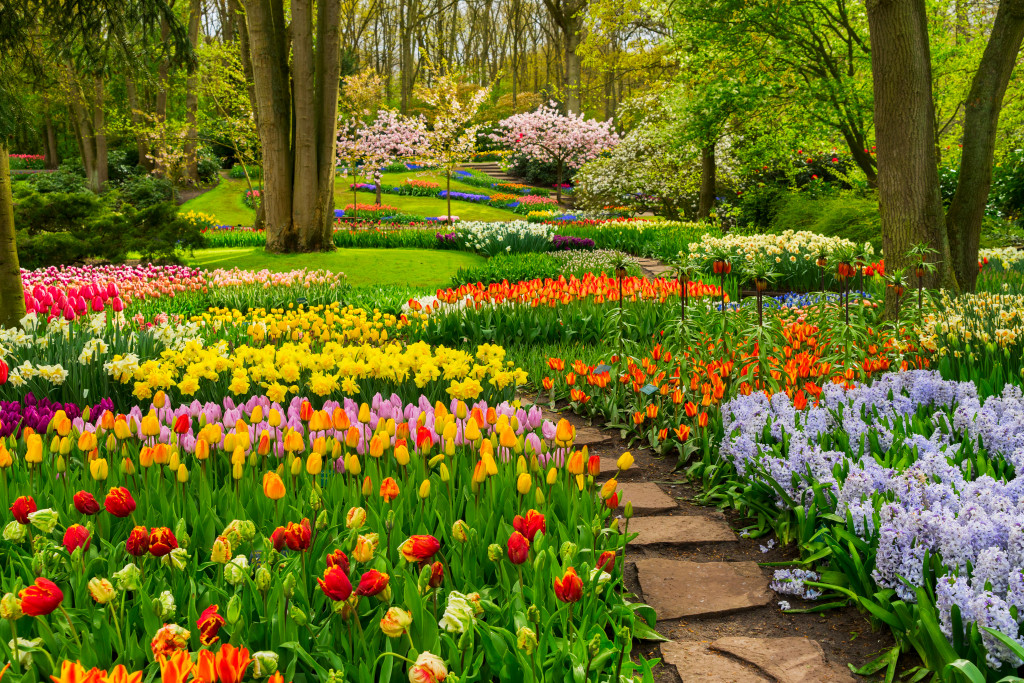With only a few weeks left in winter, it’s important to start preparing your garden for the springtime. Besides, it’s never too early to plan what flowers or vegetables you want to plant. However, the first step you need to take is making sure that your garden area is prepared and ready for warmer days ahead.
Here are some tips on how you can do just that:
Tip #1 Set a consistent watering routine
It’s important to water your plants in the morning or the evening when it’s not so hot since this is when plants can drink the most water. If you water your plants during the afternoon, the sun will evaporate much of the water before the plants have a chance to drink it.
You should also turn your hoses off or open your sprinklers when it rains since this is when your plants will drink the most water. This way, you’re saving water and allowing your plants to drink in water that would’ve otherwise been lost.
Tip #2 Test the pH level of your soil
Test to see what type of soil you have before planting any vegetables or flowers. You can do this easily with home testing kits available at your local gardening store. Some plants grow better in specific soil conditions, so it’s important to know what type of soil you have.
For example, plants with alkaline-loving leaves should be planted in soil that is alkaline. If you have acidic soil, plants with leaves that grow best at a more acidic level should be planted there.
Tip #3 Rotate your plants when planting a new garden
If you plant different types of vegetables or flowers in the same area, it’ll make it easier for pests and diseases to spread. To prevent this, you should rotate your plants every year, which means that you plant a certain type of vegetable or flower in a different area.
You can also do this by planting certain vegetables or flowers on the same day every year, such as your tomatoes on the first of June.
Tip #4 Keep up with weeding, pruning, and fertilizing
Some plants grow better in areas with less light, while others need full sunlight. You should select your plants carefully before you buy them. Once they’re planted, you should always keep an eye out for pests and diseases.
You can also add fertilizer to your plants once or twice a month during the growing season. If you notice weeds, remove them right away by hand-pulling or with a plastic scuffle hoe.
Tip #5 Prepare your soil for planting

The best thing to do in preparation for the spring is erosion management. You want to make sure that your soil is well-prepared so that the roots will have a strong base to begin growing from.
This includes making sure that all weeds are removed, and that the soil is well fertilized because it will help your plants grow better. You can also add mulch around the base of your trees and shrubs to prevent soil erosion, and increase the overall health of the plants.
Tip #6 Learn about your plants before planting them
To have a successful garden, you should learn about the type of plants that will grow in your environment. This includes understanding your plant’s water needs, sunlight requirements, and how much fertilizer it needs to grow.
If you have a shady area in your garden, some plants like hostas or ferns might work there. Some flowering plants do better in shady areas than others, such as violets or bleeding hearts. You can also add rocks in shady areas to create an interesting garden design and add color.
Tip #7 Create a garden diary
If you create a garden diary, you can make observations about the plants in your yard throughout the year. You should write down their appearance and any maintenance issues you might have had. This will help you find out what types of plants do best in your yard, and it’ll make it easier for you to make decisions about plants when the time comes.
Tip #8 Make your garden welcoming
You should always spend some time maintaining your garden because this will keep it looking fresh and healthy all year long. This time of the year is perfect for making sure that everything in your garden is well trimmed, watered, and fertilized.
Springtime is perfect for working outside, especially since all the plants are starting to grow again, so it’s a good time to assess your garden’s condition. It’s a great way to get outdoors and enjoy the weather. Plus, you can take your time to plan out your garden before you start planting. So, if you’re looking for ways to make your garden look great, just follow these tips and tricks!




